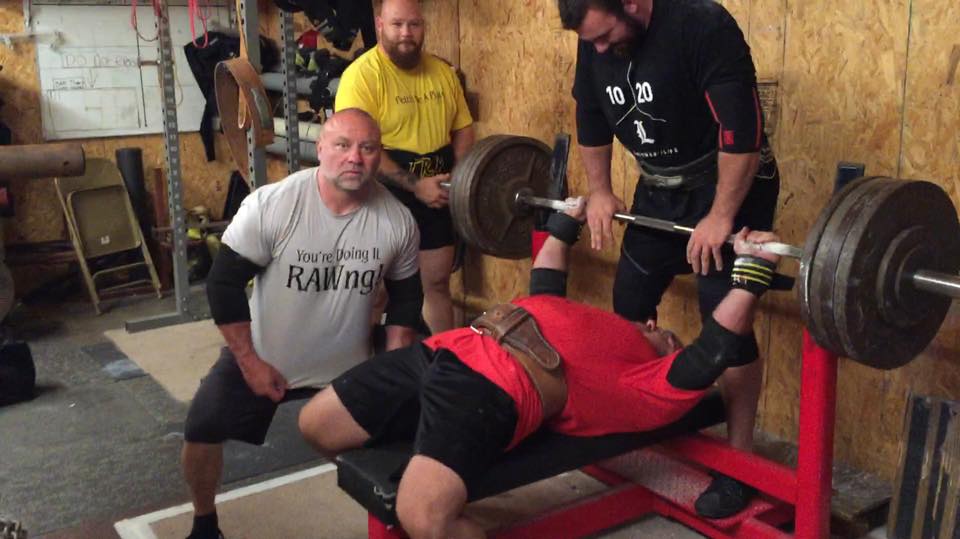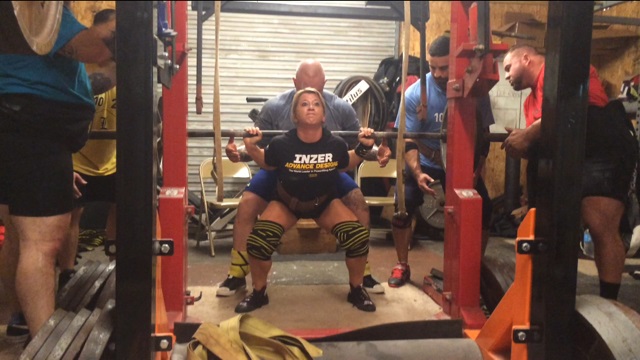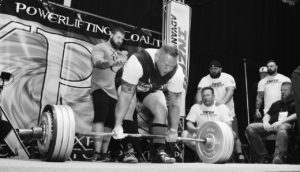
30 Oct Volume For The Beginner To Intermediate Strength Athlete – Where To Start
By: Brian Carroll
What Is A Baseline?
I wrote an article back in March about establishing a ‘baseline’ for everything. You need a starting point and somewhere you can deviate from when necessary – add or take away when it’s time. Your diet, training (volume and intensity), supplements and anything else in your tool box that you and your coach utilize to be a great athlete. Read the article here Why Having a Baseline is Important.
This is simply a starting point for those that either are lost, don’t have much experience or simply want to track what works for them and what doesn’t. One thing you don’t want to do is throw the baby out with the bath water. Meaning, don’t just chuck everything out because one element or aspect is not working.
One thing I hate is a program jumper. I think I’ve done a pretty good job with outlining a solid philosophy that you can take bits and pieces from and implement them into your own training, even if you only use a little bit of what I advocate. You don’t always have to jump ship….but tinkering is good.
Volume – What Is It?
The term training “volume” is something that you hear thrown around very often now, especially now that everyone has written an e-book, fudged their training and official numbers in his or her bio with no record of any such feats, “coached” dozens and dozens of really good (meaning 2-3 athletes) and now is a programming genius because social media says so. Add to that they are funny, well liked and make you giggle. Am I right? Substance doesn’t matter anymore in 2015. Sadly it’s about how cool you portray yourself to be.
What is volume pertaining to strength training? Easy answer and I try to not over complicate it. To me, it’s the amount of work you are doing overall and usually we use it in relation to the big 3 lifts – squat, bench and the deadlift. For example: “she trains very low volume” translates as “she does not do a ton of work –reps and sets compared to X”. “He trains very high volume” translates as “he does a lot of work- so many reps and sets compared to X”, and it goes on. As with any smart and intelligent program, IMO, volume and training intensity must be on opposite ends of the spectrum most of the time. If you are following a great philosophy like 10/20/Life, both will taper and shift according to and depending on where you are in your training cycle.
Of course, there are the outliers and exceptions. There are always exceptions to this volume and intensity balance but, for the most part, it will be true the majority of the time for many athletes. Riding the line and doing enough but not too much is a very fine and delicate line, especially if you follow 10/20/Life and are in pre-contest mode. In the middle of a peaking cycle (weeks 5, 6, 7 etc) you will have the hardest training (for most people and most challenging) of the cycle. Volume is tapering down but intensity is going up quite a bit and you are looking to peak.
At this point, you aren’t trying to build up work capacity or even build strength, you are PEAKING IT. Do you know the difference? With the 10/20/life program we build strength in the offseason by attacking weak points, doing the things we suck at and hate, all to build strength and get better. During the offseason we also use less intensity overall (less heavy), but more volume (more reps and sets). We are not testing strength or maxing out, we are building it up over 10 weeks with moderate intensity and high volume. On the contrary, for pre-contest we are actually taking built strength from the offseason, and channeling or funneling this new found strength into peaking the strength for competition day.
A good place to start for volume is once again, somewhere in the middle of the road as with just about everything. For example, if we are starting the offseason of 10/20/Life, you would start with something such as a 5×5 for an RPE of 6 or the like. Very moderate intensity (think of a 6/10 on the pain scale) but doing 5 sets would not be considered low volume. Keep in mind, when using the RPE scale your RPE of 6 may change depending on outside factors—stress, sleep, travel, diet, etc. Adjust accordingly and listen to your body. Another way to gauge the RPE is how many reps you have left in the tank. An RPE of 6 would mean you have approximately 4 more reps in the tank. The benefit of working with RPE for volume is you can adjust accordingly from week to week depending on how the loads feel, within reason of course. This does NOT mean you would squat 315*5 one week and then 405*5 the next week, because you feel good. The weights will not vary that drastically. It may take some time and trial and error to get used to the RPE but once you do, it’s simple and an easy adjustment. And, as always, keep a training journal and notes on how the weights feel and move. Video is also very helpful to critique lifts and see how your technique is. Have someone you trust (your coach or training partners) look at them and give you advice.
The bottom line is to pick a moderate load/RPE/set/rep range (as suggested above), try it out for more than a few weeks and adjust accordingly from there. You may find you don’t recover as quickly as you thought and you need to lower the weights or you need some heavier loads to get sufficient work in. As a beginner, there is going to be a lot of trial and error and figuring what works for YOU, not just what your favorite lifter or internet lifter is doing at the moment. If you are making progress and getting stronger, don’t change anything until you need to. Why change it or do more work if you’re still making progress? The advantage of being a beginner lifter is that you can make progress and get stronger very easily so don’t over train, over think, over complicate your training or do more work than necessary and potentially increase your chances of injury when it’s not necessary. Get a baseline to work off, stick to a good program and modify as needed from there.
Brian Carroll
Latest posts by Brian Carroll (see all)
- Brian Carroll Coaches the Birddog - April 24, 2024
- Protected: -Header Image Post Template 2024 - April 18, 2024
- Brian Carroll X Professor Stu McGill full interview 2024 - April 16, 2024








Sorry, the comment form is closed at this time.